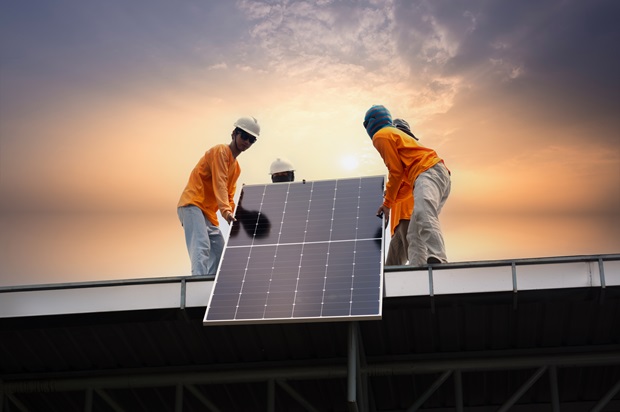Increasing solar module efficiency and expanding manufacturing capacity play complementary roles in reducing the costs of metal halide perovskite/silicon tandem solar modules, according to researchers at the US Department of Energy’s National Renewable Energy Laboratory (NREL). Each cost lever can play a similar role depending on a manufacturer’s ability to scale up and improve module performance.
The National Renewable Energy Laboratory’s (NREL) study found, “Most photovoltaic (PV) modules manufactured presently are based on single-junction silicon solar cells. By pairing silicon with another solar cell material such as metal halide perovskites (MHPs), thus creating a tandem. Manufacturers can create a solar module that can convert more sunlight to electricity than using silicon alone.”
It added, “This tandem technology is still in the early stages, and multiple options are being pursued to integrate MHPs and silicon, with a lot of unknowns in terms of cost and performance. To address this gap, the researchers built a manufacturing cost model that combines laboratory processes with existing equipment and supply chains to compare different possible approaches at scale.”
The study showed, “The researchers examined a variety of methods for constructing a tandem module and compared the sensitivity of manufacturing costs of the materials used to fabricate device layers, production equipment costs, factory location, and other factors. The factors they found to impact manufacturing costs most significantly were factory throughput and module efficiency.”
“One of the questions that this paper answer is, what is the value of that efficiency,” said Jacob Cordell, lead author of the paper, “Technoeconomic analysis of perovskite/silicon tandem solar modules,” which appears in the journal Joule. “One key takeaway is that a 2.5% absolute efficiency gain in a module provides the same reduction in cost per nameplate capacity as doubling the size of your factory.”
Detailed Cost Analysis Model
The researchers found, “Using the Detailed Cost Analysis Model (DCAM), which is now publicly available, the researchers were able to test various scenarios, including any changes in cost that result from locating factories in different parts of the world and different types of manufacturing incentives. By making this model available, companies and researchers can use this baseline to investigate how varying processes and materials will impact costs. This model does not address the energy production or lifetime of these modules, which are active areas of research.”
“Starting with a baseline model where a manufacturer fabricates 25%-efficient modules in the United States at an annual production capacity of 3 gigawatts, researchers made a simultaneous comparison of efficiency and manufacturing output to determine how the cost of the module would change with increasing nameplate power-generating capacity. “That shows the power of research for improving the efficiency of the device and reducing the cost per watt of the module,” Cordell said.
The journal article, coauthored by Michael Woodhouse and Emily Warren, noted that module efficiency is a dynamic variable for predicting the cost of tandem modules because so many other variables have and will continue to change to be able to achieve the efficiency and durability levels required for commercially viable photovoltaic modules. Tandem modules must have an efficiency of at least 25% to be price-competitive with other solar technologies. The next steps for the commercialization of perovskite/silicon tandem modules are to improve the reliability of the technology in the field and scale the area of high-efficiency devices to full module sizes while maintaining performance.
NREL is the U.S. Department of Energy’s primary national laboratory for renewable energy and energy efficiency research and development. NREL is operated for DOE by the Alliance for Sustainable Energy LLC. The U.S. Department of Energy’s Solar Energy Technologies Office funded the research.

